Letter tracing skills Normal Worksheets for Ages 3-5
5 filtered results
-
From - To
Introduce your child to the world of writing with our Letter Tracing Skills Normal Worksheets designed for ages 3-5. These worksheets feature engaging and age-appropriate activities that help young learners master their ABCs through fun and interactive tracing exercises. With bright illustrations to capture their attention, each worksheet focuses on developing fine motor skills, hand-eye coordination, and foundational early literacy. Ideal for preschoolers and kindergarteners, our letter tracing worksheets provide a solid start to lifelong learning. Support your child's educational journey with Kids Academy's expertly crafted resources, ensuring they build confidence and proficiency in writing letters one step at a time.
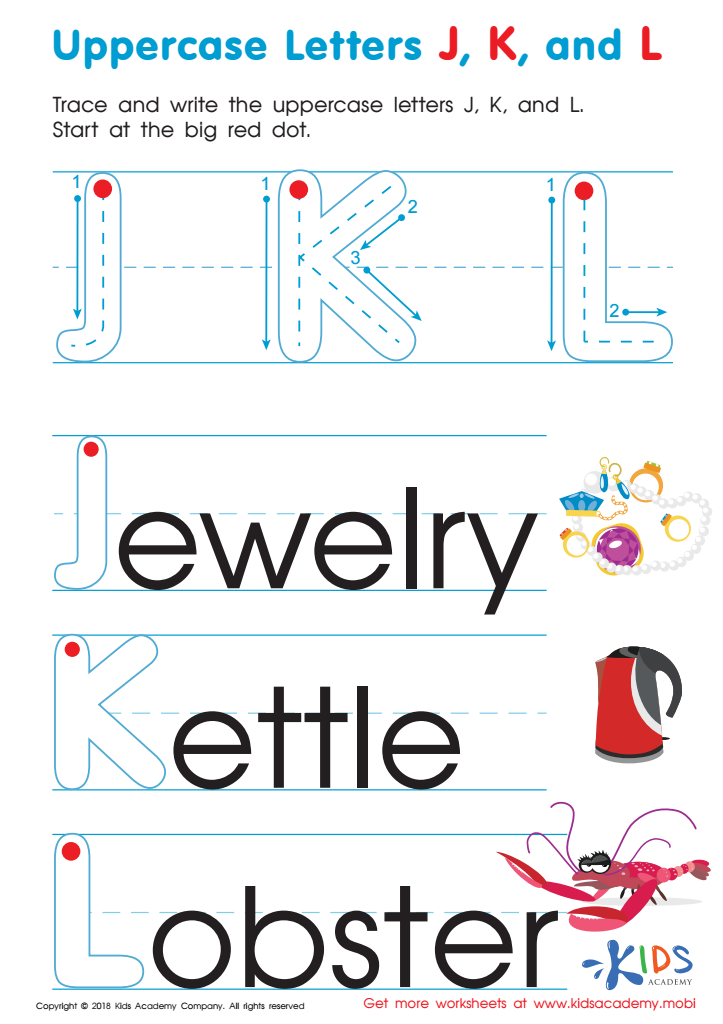

Uppercase Letters J, K, and L Worksheet
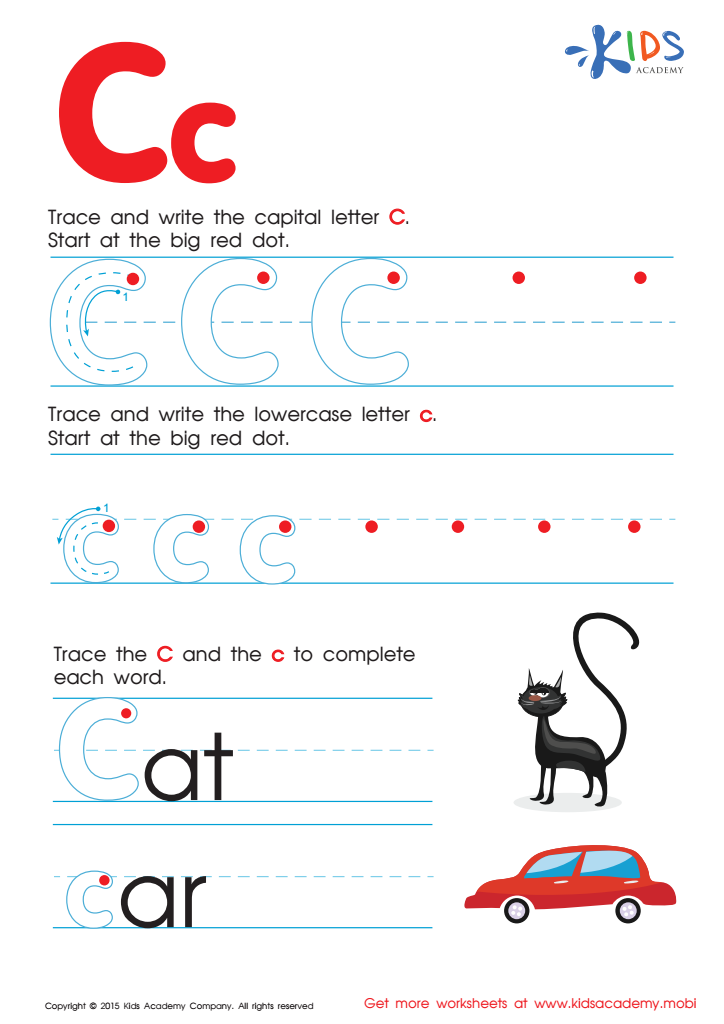

Letter C Tracing Page
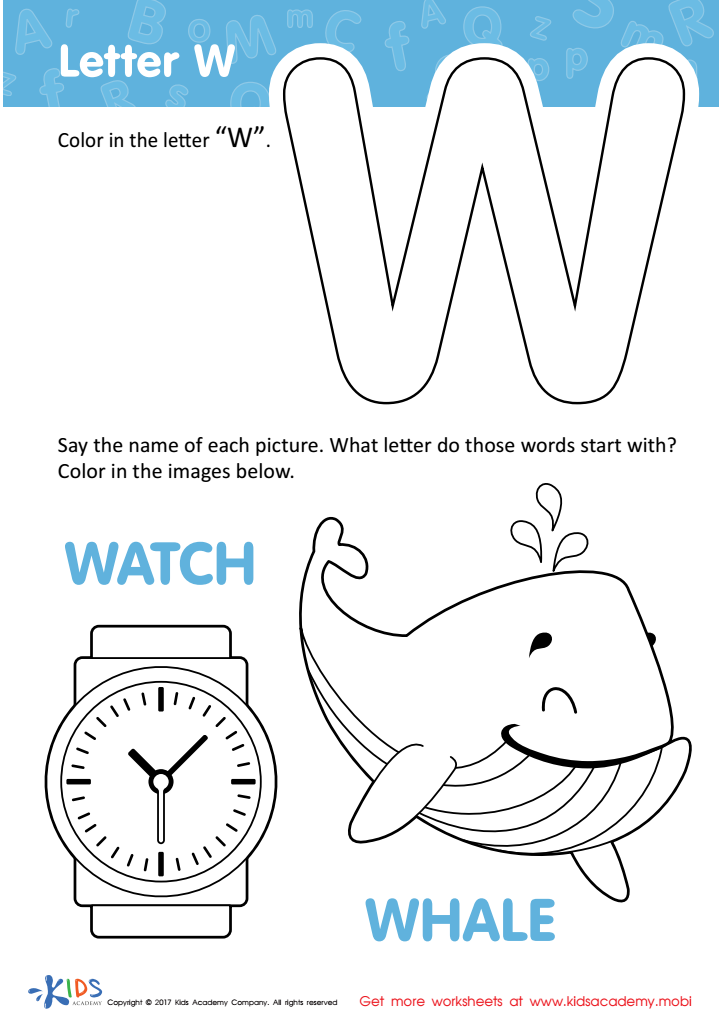

Letter W Coloring Sheet
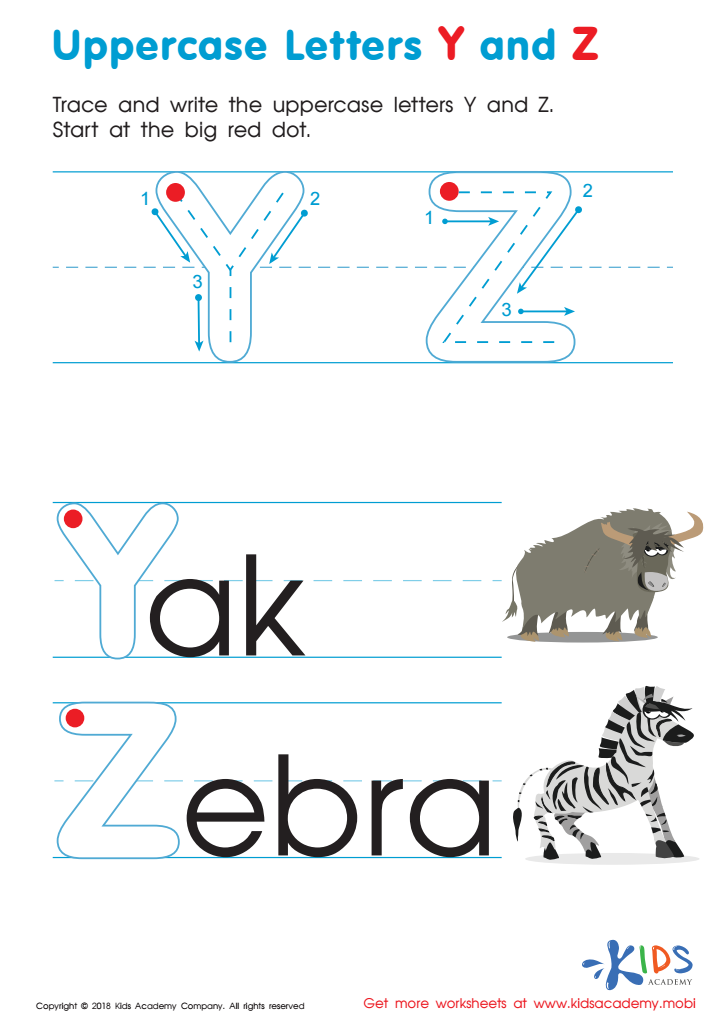

Uppercase Letters Y Z Worksheet
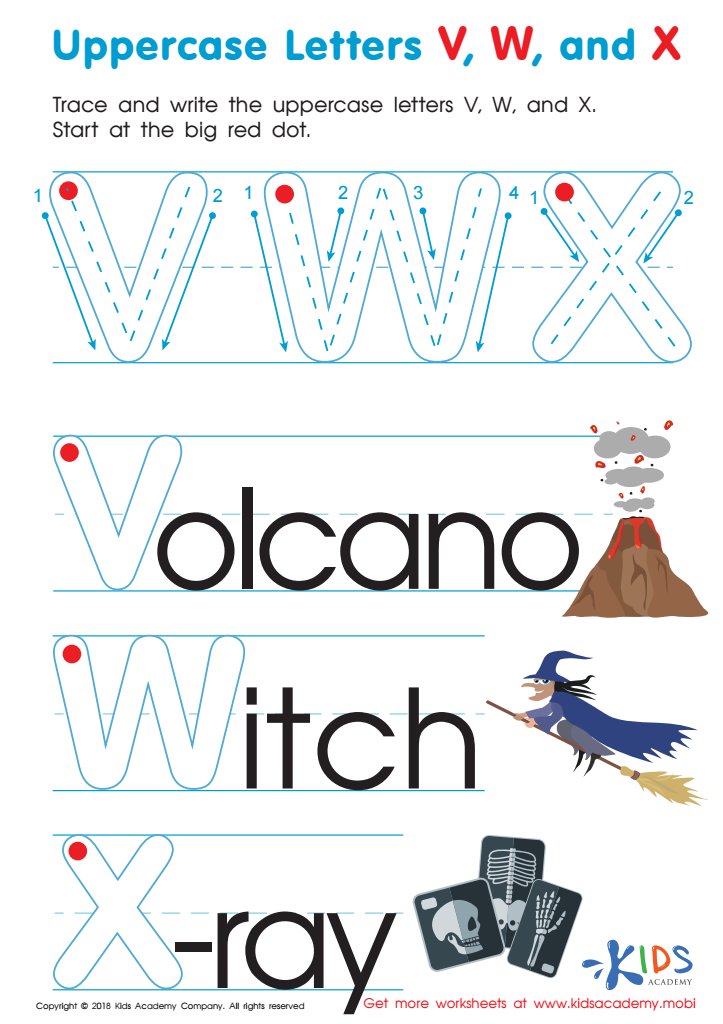

Uppercase Letters V, W, and X Worksheet
Parents and teachers should care about letter tracing skills for children aged 3-5 because it forms the foundation for important literacy and fine motor abilities. During these formative years, kids are in a critical stage of development where they begin to understand the basics of writing and reading. Letter tracing helps them recognize letter shapes, which is essential for letter identification—a precursor to word recognition and reading fluency.
Engaging in tracing activities enhances fine motor skills as well. Holding and maneuvering a pencil accurately requires coordination and dexterity, skills that are crucial for all kinds of fine motor tasks beyond writing. Strong fine motor skills contribute to overall hand–eye coordination, influencing activities like buttoning clothes, using utensils, and academic tasks in future classes.
Furthermore, letter tracing reinforces correct letter formation habits. When kids learn to form letters properly from the start, they’re less likely to develop writing issues later. Early success with writing encourages a love for literacy and academic confidence, which fosters a positive attitude towards learning. Moreover, these tracing activities often involve a playful and creative component, making learning enjoyable and engaging, hence motivating the child to participate willingly.
In essence, teaching letter tracing to children aged 3-5 is an investment in their educational journey, establishing essential skills that benefit both their academic and everyday lives.
 Assign to My Students
Assign to My Students














